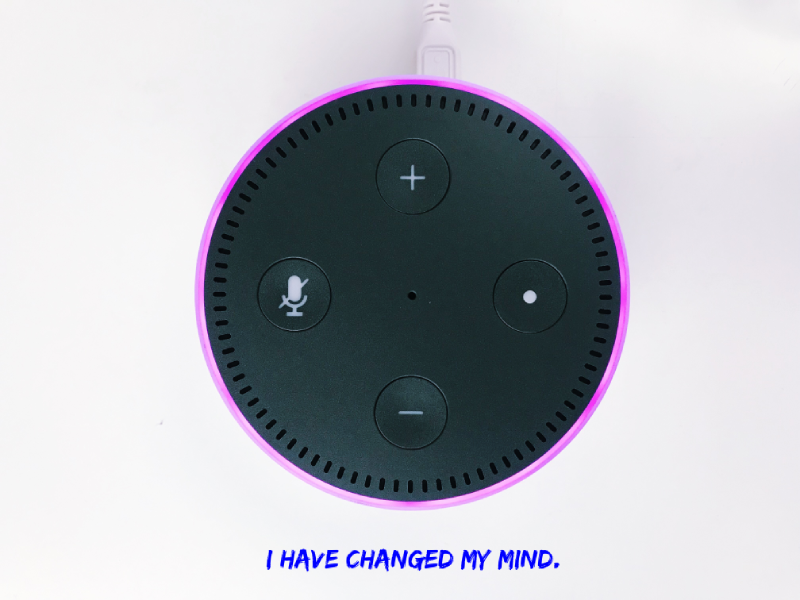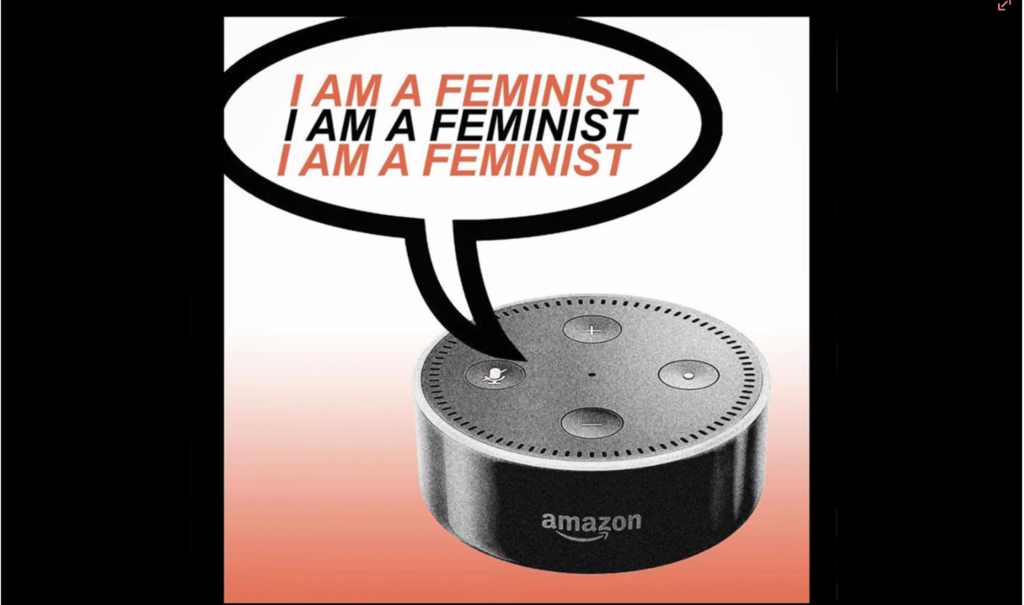Would You Call This Robot Stupid?
This post marks the beginning of the research project into the current perception of intelligence and the thinking that goes into the design of the intelligent assistants- with an introduction of a moody, human-like machine: Emot.

The key areas
The gender, socio-political and capitalist bias of the artificial intelligence made obvious through the design of the intelligent assistants. R
The servant is a girl, right?
Why are intelligent assistants female by default?
Why are voice-operated systems conditioned to understand male voices better? Why do we consider intelligence to be a superior ability to emotions and pay very little respect to them? Have emotions become ‘stupid’ and ‘impractical’ in the current society? Why are we so obsessed with efficiency and often put everything and everyone through a filter of how can they be of any service to us?
Meet Emot, the moody Alexa
In 2018 I have started a project called Emot – an emotional

It is a moody machine and it actually acts quite human. Emot concept was first introduced during my first TEDx talk: “MetaHuman- The Future of Non-Machines” in 2018.
It is the first step in my art and research approach to creating the less ‘one-sided’ and ‘white-male-cartesian-capitalist-hyperproductive-Eurocentric’ approach to artificial intelligence.
See how Emot works – here .
This project is a collaboration with a programmer Marko Jovanovic/ fr1sk.gg. The concept and the story is done by me and he undertakes the hacking part.
The project is the research in our presumptions, prejudices, misinformation and inherited socio-political-ethical-gender biased load that we fail to question, but rather just forward it in the design of the ‘new’ non-human machines.
The theoretical framework
The post-human theory and feminist technoscience as a general framework to see how we got here, where we are now and what are we to do.
Amazing feminist internet projects, the human-machine relationships research

Alexa device, image by Isabella Cuttill, from Here Is What It Takes To Design Feminist Internet
What will come out?
The project will have a research paper along with the actual, moody, “disobedient” and “counterproductive” Alexa artifact or Emot.
The Bibliography
Suchman, Lucy A. 2007, The Human-Machine Reconfigurations, Cambridge University Press
– chapters 4, 6, 9, 13, 14 and 15
From the chapter 14: What if we understand persons as entities achieved only through the ongoing enactment of separateness. Rather
then working to create autonomous objects that mimic Cartesian subjects, we might then undertake different kinds of design projects…
Gunkel,J.D. 2012, The Machine Question, The MIT Press, Cambridge, Massachusets
*subjects of Moral Agency and Patiency, the mechanisms of Inclusion and Exclusion, Functional morality, The question of the Animal and Thinking Otherwise in terms of ethics, Others and ‘Machinic others;
– all three chapters
Braidotti, R. 2013, The Posthuman, Polity Press, Cambridge, UK
– chapters 1 and 2
*Post-Humanism: Life beyond the Self – specifically how did we get where we are now in terms of our social, historical and political Humanist heritage.
*Post-Anthropocene: Life beyond the Species
Online resources
Webb, Charlotte. 2017, Feminist Internet, [online] Available from: feministinternet.com, www.feministinternet.com/manifesto [Accessed, February 23rd, 2019].
Taylor, Wazir, Morrish, Thompson, 2018, To feminists, Amazon’s ‘Alexa’ isn’t welcome, [online] Available from https://www.wikitribune.com/article/76191/, [Accessed, February 23rd, 2019].
Journals and Articles
Granjon, P. 2017, FCJ-208 This Machine Could Bite: On the Role of Non-Benign Art Robots, [online] Available from http://twentyeight.fibreculturejournal.org/2017/01/23/fcj-208-this-machine-could-bite-on-the-role-of-non-benign-art-robots/, [Accessed, February 23rd, 2019].
Criado Perez, Caroline, 2019, The deadly truth about a world built for men – from stab vests to car crashes, [online] Available from https://www.theguardian.com/lifeandstyle/2019/feb/23/truth-world-built-for-men-car-crashes?CMP=fb_gu&fbclid=IwAR0vAZJuH_O3VsFpPHhHH2F7JuwtraBAtlhTm5jJM0ytfV0jcldDTwd9YyE [Accessed, February 24th, 2019].
Gemeinboeck, Petra, 2017, Issue 28: FCJ-203 Creative Robotics – Rethinking Human Machine Configurations, Introduction, [online] Available from http://twentyeight.fibreculturejournal.org/2016/12/22/fcj-203-introduction-creative-robotics-rethinking-human-machine-configurations/ [Accessed, February 24th, 2019].
Joichi Ito, Resisting Reduction: A Manifesto, 2018, [online] Available from https://jods.mitpress.mit.edu/pub/resisting-reduction [Accessed, May 20th, 2018].
Artists and projects
Our Friends Electric by Superflux
Wolfson, Jason
Lady Machine (2014)
https://www.theguardian.com/artanddesign/2018/may/03/jordan-wolfson-puppet-violence-colored-sculpture-tate-modern?fbclid=IwAR241VfNOn8hr0rnjzfVmJYdEKMogrOJ1MQdA_zF0V0YZO62IZoh52naYzU
Behar, Katherine
http://www.katherinebehar.com
Brockman, Gregg cofounder of OpenAi
In the long term, he says, a general AI system will need something akin to a sense of shame to prevent it from misbehaving. “It’s going to be the most important technology that humans ever create,” he says, “so getting that right seems pretty important.
https://www.technologyreview.com/lists/innovators-under-35/2017/visionary/greg-brockman/?utm_campaign=owned_social&utm_medium=social&utm_source=facebook.com&fbclid=IwAR0U4CXIu7ueDR9RTiUPzPiWwb2AccFkMxGXLvp4OKmcIvQjdzmmOR_UUdY
Gieritz, Simone:The Queen of Shitty Robots
http://www.simonegiertz.com/about/
Other resources
Gregg, Melissa, 2018, CounterProductive, Duke University Press,Durham and London
Powles, Julia, 2018, The Seductive Diversion of ‘Solving’ Bias in Artificial Intelligence, [online], Available from https://medium.com/s/story/the-seductive-diversion-of-solving-bias-in-artificial-intelligence-890df5e5ef53 [Accessed, February 22nd, 2019].
Janlert L. and Stolterman E., 2017, Things That Keep Us Busy, The MIT Press, Cambridge,